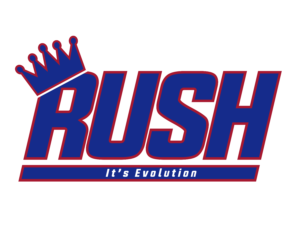Michael Stewart | NY Giants Rush Contributor
The NFL Combine: How it Works
The 2012 NFL Combine will take place from February 17th February 23rd as more than 300 top prospects will be invited to participate at the combine in Lucas Oil Stadium in Indianapolis.
This event is a vital step in athletes achieving their NFL dreams. Executives, coaches, scouts and doctors from all 32 NFL teams conduct an intense, four-day job interview in advance of the NFL Draft. The NFL Combine has two elements in evaluating each player’s overall talent (Workout Drills and Positional Drills).
Workout Drills consists of 6 stations; in which each athletic will go through vigorous tests to either enhance their status or to diminish it. Here is a brief breakdown of the workout drills:
(Workout Drills)
40-yard dash – The 40-yard dash is the marquee event at the combine. It’s kind of like the 100-meters at the Olympics: It’s all about speed; explosion and watching skilled athletes run great times. These athletes are timed at 10, 20 and 40-yard intervals. What the scouts are looking for is an explosion from a static start.
Bench press – The bench press is a test of strength — 225 pounds, as many reps as the athlete can get. What the NFL scouts are also looking for is endurance. Anybody can do a max one time, but what the bench press tells the pro scouts is how often the athlete frequented his college weight room for the last 3-5 years.
Vertical jump – The vertical jump is all about lower-body explosion and power. The athlete stands flat-footed and they measure his reach. It is important to accurately measure the reach, because the differential between the reach and the flag the athlete touches is his vertical jump measurement.
Broad jump – The broad jump is like being in gym class back in junior high school. Basically, it is testing an athlete’s lower-body explosion and lower-body strength. The athlete starts out with a stance balanced and then he explodes out as far as he can. It tests explosion and balance, because he has to land without moving.
3 cone drill – The 3 cone drill tests an athlete’s ability to change directions at a high speed. Three cones in an L-shape. He starts from the starting line, goes 5 yards to the first cone and back. Then, he turns, runs around the second cone, runs a weave around the third cone, which is the high point of the L, changes directions, comes back around that second cone and finishes.
Shuttle run – The short shuttle is the first of the cone drills. It is known as the 5-10-5. What it tests is the athlete’s lateral quickness and explosion in short areas. The athlete starts in the three-point stance, explodes out 5 yards to his right, touches the line, goes back 10 yards to his left, left hand touches the line, pivot, and he turns 5 more yards and finishes.
Positional Drills consists of specific drills for each position which is more defined and gives scouts a better evaluation for that player. Below are the Positional Drills for each position:
(Positional Drills)
Quarterbacks: Every scout will tell you that during the Combine, they want to see how a Quarterback handles the following:
- 3-step/5-step/7-step drop-back: How well QB’s handle snaps under the center
- Arm strength: Can they throw a slant, an out, or a deep route.
- Footwork: How well can the Quarterbacks adjust their feet when throwing?
- Ball Position: Do they keep the ball high or low in their drop-backs.
Running Backs: Of all the various drills conducted with Running Backs. Scouts will tell you the one that separates the elite from the average is the Off Tackle Reaction Drill. Basically, the runner receives a handoff and runs off tackle over a series of bags (approx 6 bags). At the end of the bags is a coach holding a full size bag that he moves either left or right as the runner is approaching him. The runner needs to cut the opposite direction of the bag as quick as possible and then explode up the sidelines.
Wide Receivers/Tight Ends: The most effective Drill to evaluate Receivers is called the Gauntlet Drill. Scouts love it and Coaches hate it, but it has been an effective tool to measure a receiver’s ability. Here’s how it works: a Receiver runs a straight line (approx 53 yards) at full speed and must look to his right and left to catch balls thrown to him from Quarterbacks. Scouts look for vision and soft hands to determine the receiver’s grade.
Offensive Linemen: The most important drill for all linemen to show their worth to NFL scouts is called the Kick Slide Drill. Although this drill benefits OT mostly, OG and OC are required as well; here’s how it works: The OL lines up in a 2 point stance on the first attempt and then in a 3 point stance on the 2ndattempt. His objective is to prevent a pass rusher to get to the cone (which is the Quarterback, 12 yards back from him on a 45 degree angle). Scouts are looking for balance, footwork, and a solid athletic foundation.
Defensive Linemen: This two-part drill is called the Dip/Swim Drill; and basically it goes like this: The DL lines up first on the left-side of the ball with a full size bag 4 yards from him, simulating an OL. Once the ball is snapped, the DL most use the rip technique which is using his right arm in an upper-cut motion under the OL outside armpit.
Once he executes that move he then most run at full speed pass the OL and directly to the QB. On the Swim Drill, the DL lines up on the right-side of the line and once the ball is snapped; attack the OL with his left arm in a full swing motion to get the OL off-balance. Once contact is made, the DL will then take his right arm in an over the top motion (like swimming) on the inside shoulder of the OL and proceed to the QB at full speed.
Linebackers: With the NFL becoming more of a passing game, scouts value this drill above all in determining if a LB is capable of becoming a 3 down LB. It’s called the Pass Drop/Hip Rotation Drill and here’s how it works: The LBer lines up 8 yards directly in front of a scout holding a football.
The scout will then instruct the LBer to move in certain directions by using the ball as a pointer. Throughout this drill, the player must maintain visual on the ball and show proper footwork and balance. After 3 to 4 directional moves, the coach will then throw the ball to the LBer, who must catch it and sprint back to the coach.
CornerBacks/Safeties: The most valuable drill that scouts perform on Cornerbacks and Safeties is called the Speed Turn Drill. Coaches line up the CB/S roughly 10 yards up field and have them back pedal anywhere from 5 to 10 yards at full speed. Holding a ball as a directional, scouts will continue this drill by having the CB/S run back and forth at full speed until they show them the speed turn directional (which simulates a receiver running by them). At this point, the CB/S must turn and sprint to a designated area where the ball will be thrown.
Once the NFL Combine is over, you will see many Mock Drafts being altered as many players will impress scouts so much that their value will rise. Unfortunately; many players will do the opposite and their value will go down; which will affect their position in the draft. Although the Combine is a valuable tool to evaluate talent, it is not itched in stone as to the success or failure of these players. Nonetheless; it’s interesting to watch and has been a major tool for NFL teams.

